Believe it or not, lightning comes in a wide variety of colors. In fact, it’s been observed in nearly every color of the rainbow. Although some colors are rarer than others, almost any color is possible depending on the circumstances. According to The National Severe Storms Laboratory, “Haze, dust, moisture, raindrops and any other particles in the atmosphere will affect the color by absorbing or diffracting a portion of the white light of lightning.” In addition to these factors, distance from a bolt, general location, and personal vision will influence the color of lightning observed as well. Let’s explore different colors of lightning, discuss what influences these pigments, and rank them in order from the rarest to the most common.
1. Pink
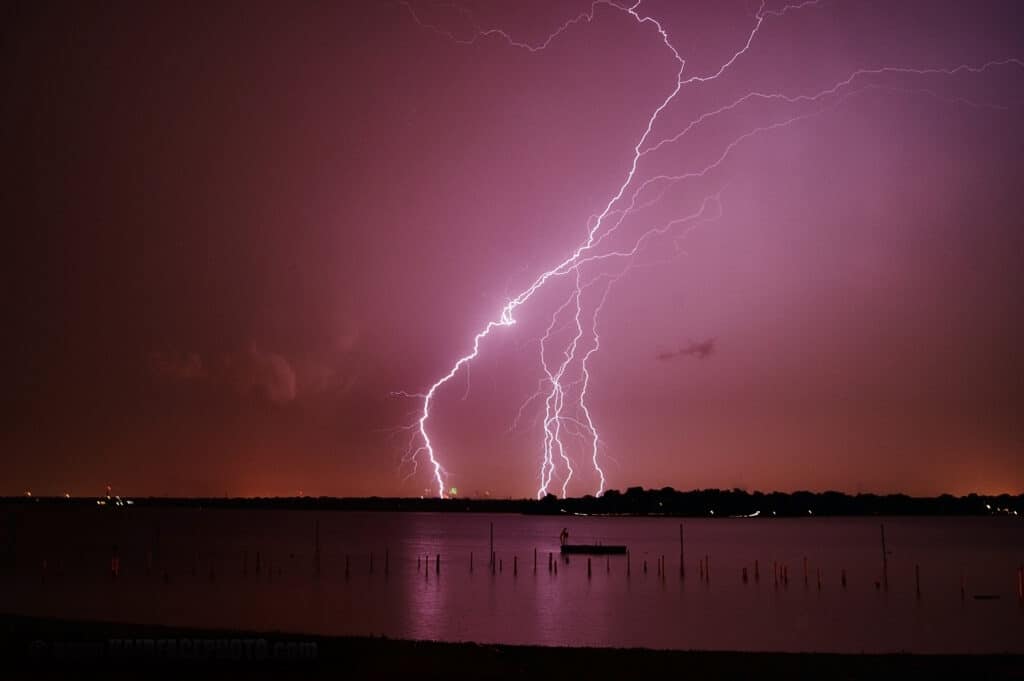
Pink and green lightning are similar in rarity.
©iStock.com/HairFacePhoto
Among all lightning colors, pink seems to be the rarest. Seeing lightning during a snowstorm is quite uncommon, and pink lightning is most often observed during periods of snow. This contributes to its rarity and any observer of this phenomenon can consider themselves quite lucky. In addition, pink lightning is often confused with red lightning, which is still uncommon, but more so than pink.
2. Green

The color of the sky itself can influence the appearance of lightning.
©Wally Stemberger/Shutterstock.com
Similar to pink lightning, green lightning is also most common during snowy conditions. During these storms, the snowflakes are able to bend light in such a way that the bolts appear to be green. Although both colors are essentially equally rare, green lightning is observed slightly more.
3. Red
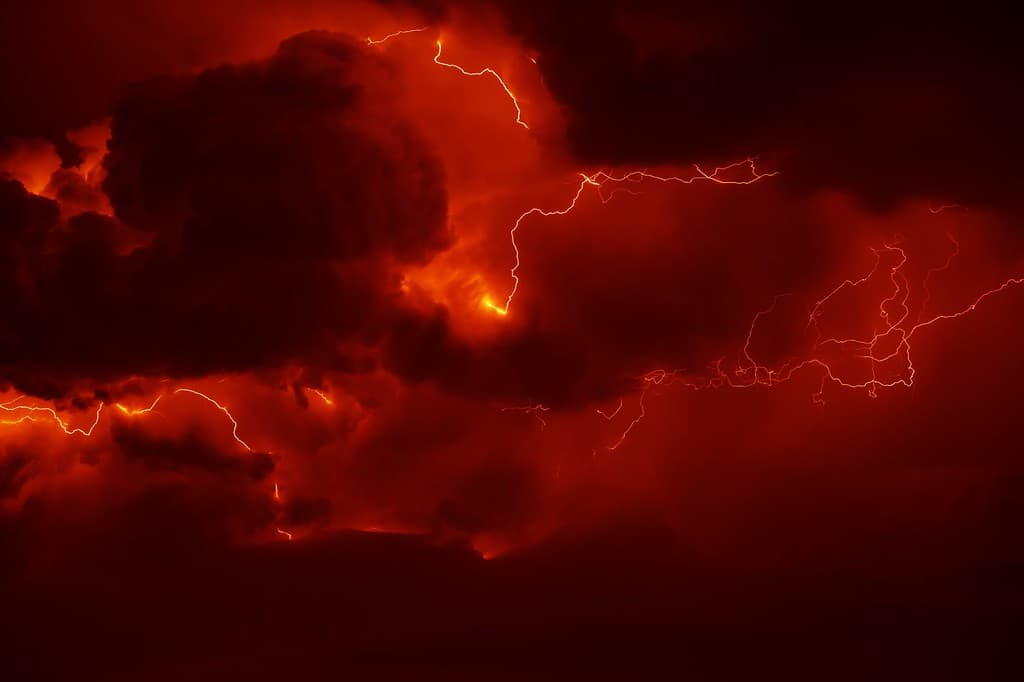
Red lightning is also referred to as “red sprites.”
©Ruslan Kokarev/Shutterstock.com
In addition to moisture, haze, and particles in the air, the temperature of a lightning bolt can also be a key component in determining its color. According to StellarNet, “The temperature of the bolt also affects what color we see. The hotter it is, the closer to the end of the spectrum the color is.” This is one of the chief reasons we observe red lightning. Red lightning is most often observed during severe thunderstorms.
4. Yellow

Some lightning bolts can reach temperatures five times as hot as the sun.
©Azovsky/Shutterstock.com
As we stated above, the contents in the air can influence the color of the lightning that we as observers see. Yellow lightning is often the result of an abundance of dust in the air during the time of a storm. In addition, yellow and orange-toned lightning is associated with volcanic activity. Believe it or not, volcanoes can produce lightning during an eruption. The eruption itself will release a wealth of heated ash, dirt, debris, and dust. These particles combined with the gases released will influence the color greatly. Often, it’s shades of yellow, orange, and sometimes red.
5. Purple
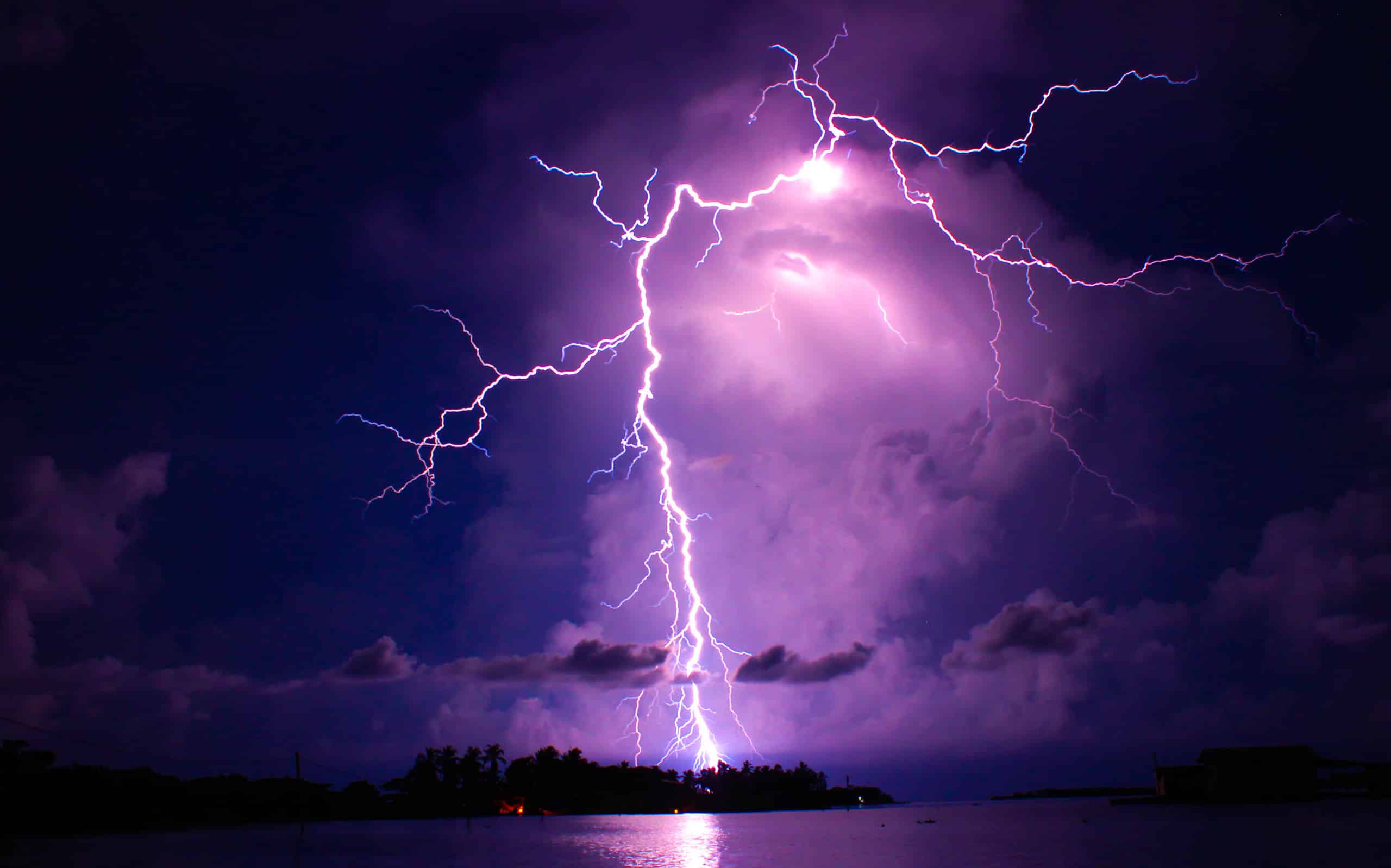
If you find yourself stuck outside during a lightning storm, avoid seeking shelter under trees as this is considered one of the most dangerous places to be.
©Christian Pinillo Salas/ via Getty Images
Among all lightning colors, purple, blue, and white are the most common. However, among these, purple tones seem to be the rarest of the three. Purple lightning is usually indicative of low moisture and low heat. In addition, seeing purple lightning can indicate the presence of oxygen and nitrogen. These elements are responsible for causing blue and red tints, which combine to create purple.
6. Blue
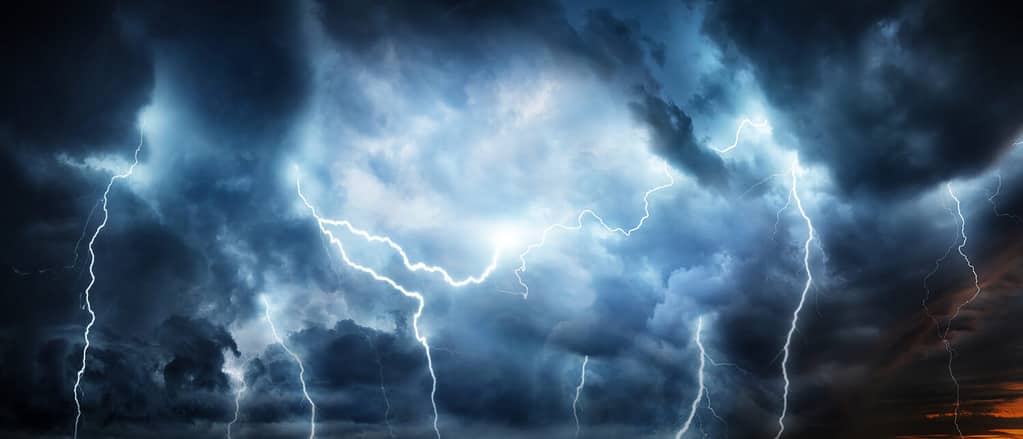
An individual’s chance of getting hit by a bolt of lightning is roughly 1 in 15,000.
©Triff/Shutterstock.com
Blue lightning is quite similar in appearance to white lightning, and some observers confuse the two. The cause of blue lightning is linked to several factors. Some of these include the color of the sky, distance from the ground, distance from the observer, the vision of the observer, and the presence of nitrogen and oxygen in the air. This color is far from uncommon, and curious parties have a good chance of catching a glimpse of it during a typical thunderstorm.
7. White
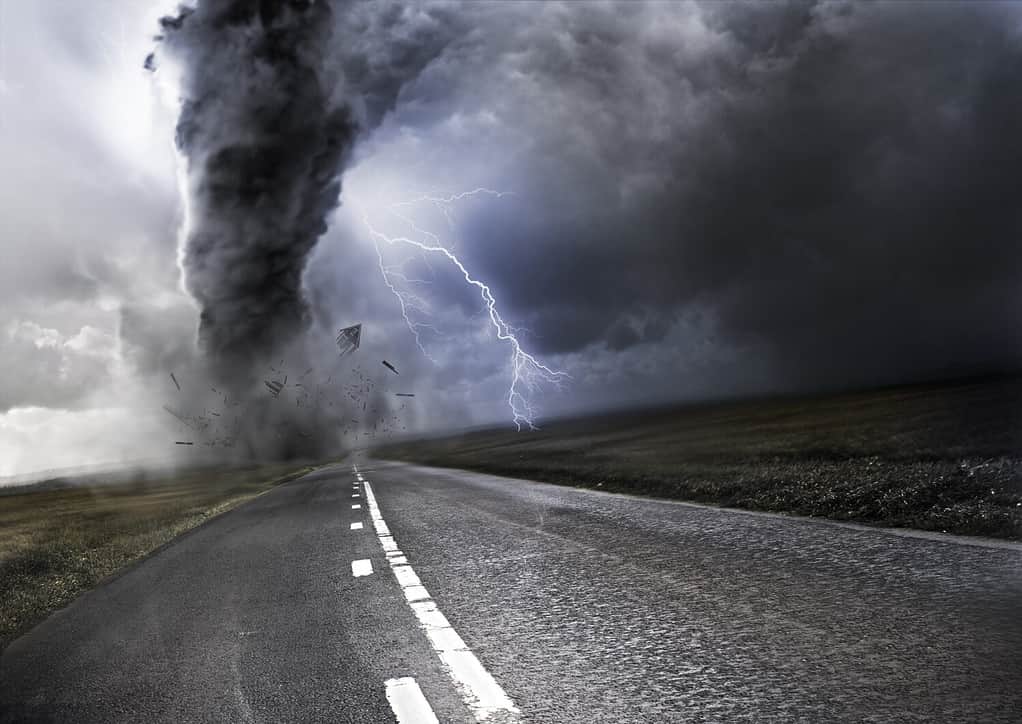
The amount of air and the composition of the air in a specific area are primary influences on the color of lightning.
©solarseven/Shutterstock.com
When you picture a lightning bolt in your head, chances are you’re imagining white lightning. This is no surprise at all, as this color is the most common. In addition to the composition of the air playing a role in what color lightning appears to be, your distance from the bolt itself influences color as well. People who are viewing from short distances are more likely to see white lightning bolts, but why is this? In essence, the more air a lightning bolt has to travel through to its observer, the more colored it will appear due to an increase of particles filtering the light.
Thank you for reading! Have some feedback for us? Contact the AZ Animals editorial team.








